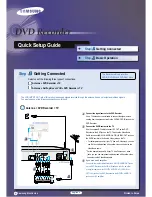
User Guide
DDOC0108-000-A2
CNS4 CSfC
2 - 6
Overview
Revision 1.0
The ILE module is located behind a front panel access cover labeled FIPS CRYPTO. The ILE
module has three status LEDs and a zeroize button. Refer to paragraph 3.2
for information regarding the LEDs and button.
The ILE module encryption key(s) can be zeroized (removed) by one of the three methods:
•
Pressing the zeroize button on the ILE.
•
Applying an external trigger via a signal applied through the Power / RS-232 connector / cable.
•
Sending a software command via the Command Line Interface (CLI).
Refer to paragraph 6.4.1
for more information regarding removing the encryption key from
the CNS4 / ILE module.
NOTE
The 1st account created on the ILE is always the crypto officer account (had admin privileges).
Four additional user accounts can be created as well.
Control of ILE module functions is established through the CLI. Refer to
section for additional information regarding applicable CLI commands.Several ILE functions are
monitored to ensure proper operation. Refer to paragraph 6.2.5
for additional information.
Refer to paragraph Figure 10.1
for instruction on installing or removing
the ILE module. The ILE requires use of an account to access data. Refer to paragraph 6.4.1
t for additional information.
2.2
CNS4 Features
•
Built-In-Test
•
Power-On (PBIT)
•
Initiated (IBIT)
•
Continuous (CBIT)
•
Command Line Interface
•
Encryptor Features
•
CSfC Associated Encryption
•
Hardware Encryption Layer
•
Software Encryption Layer
•
Local Zeroization
•
Remote Zeroization
•
Five-second Power Hold Up
•
Four 1 Gigabit Ethernet Ports
•
Health Monitor (with Front Panel Indicator)
•
Indicator Brightness Control
•
Multiple Protocols
•
Common Internet File System (CIFS)
•
Dynamic Host Configuration Protocol (DHCP)
•
File Transfer Protocol (FTP)
•
HyperText Transfer Protocol (HTTP)
•
Internet Small Computer System Interface, (iSCSI)
•
Network File System (NFS)
•
Secure Shell Protocol (SSH)
•
Simple Network Management Protocol (SNMP)
•
Power / RS-232 Port
•
Solid-state Storage
•
Thermal Overtemp Sensors
















































